Image List
-

IRAC not only probes what is known - it also has uncovered some mysterious objects like this so-called "tornado" nebula. Because the camera is sensitive to light emitted from shocked molecular hydrogen (seen here in green), astronomers think that this strange beast is the result of an outflowing jet of material from a young star that has generated shock waves in surrounding gas and dust.
NASA / JPL-Caltech / J. Bally (University of Colorado) -
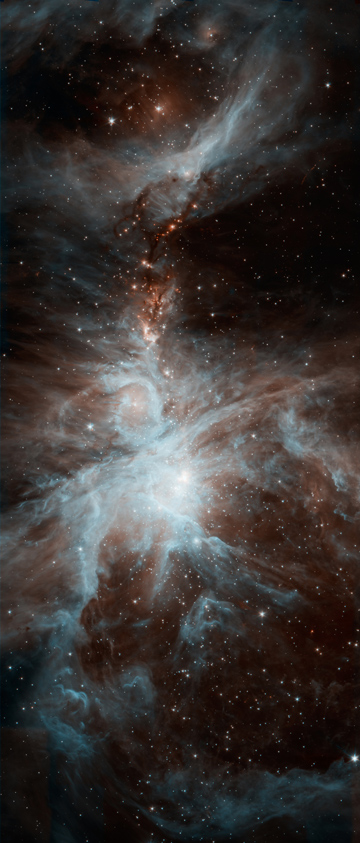
The famous nebula in Orion, located about 1,340 light-years from Earth, is actively making new stars today. Although the optical nebula is dominated by the light from four massive, hot young stars, IRAC reveals many other young stars still embedded in their dusty womb. It also finds a long filament of star-forming activity containing thousands of young protostars. Some of these stars may host still-forming planets. This image was taken during Spitzer's warm mission.
NASA / JPL-Caltech / Univ. of Toledo -
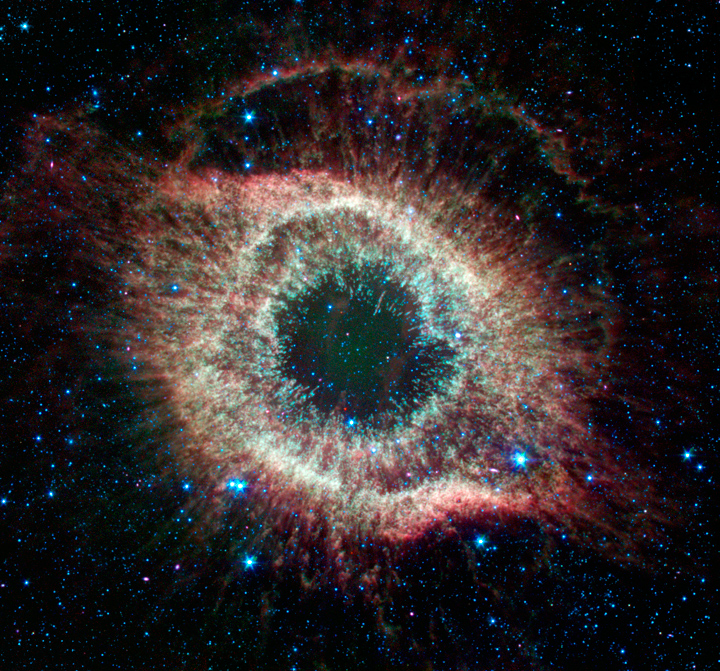
After a long life of hydrogen-burning nuclear fusion, stars move into later life states whose details depend on their masses. This IRAC image of the Helix Nebula barely spots the star itself at the center, but clearly shows how the aging star has ejected material into space around it, creating a "planetary nebula." The Helix Nebula is located 650 light-years away in the constellation Aquarius. This image was taken during Spitzer's warm mission.
NASA / JPL-Caltech / J. Hora (CfA) & W. Latter (NASA/Herschel) -
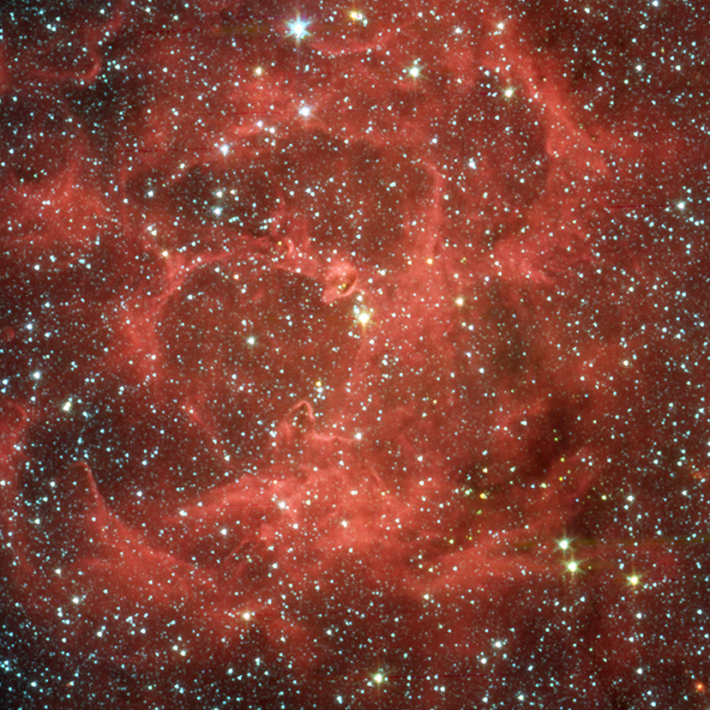
The early universe contained only hydrogen and helium. No other chemical elements existed. All of the elements needed for life were created later in the nuclear furnaces of stars, and then ejected into space. IRAC studies how stars mature. It can observe how the processes of stellar evolution affect the environment. The Trifid Nebula hosts stars at all stages of life, surrounded by gas and dust that form a beautiful roseate nebula. It's located 5,400 light-years away in the constellation Sagittarius.
NASA / JPL-Caltech -
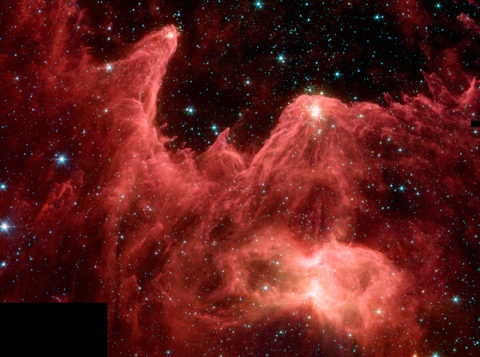
Within galaxies like the Milky Way, giant clouds of gas and dust coalesce under the influence of gravity until new stars are born. IRAC can both measure the warm dust and peer deeply into it to study the processes at work. In this giant cloud several stellar nurseries can be seen, some still within the tips of dusty "mountains of creation." This image shows the eastern edge of a region known as W5, near the Perseus constellation 7,000 light-years away.
NASA / JPL-Caltech / CfA -
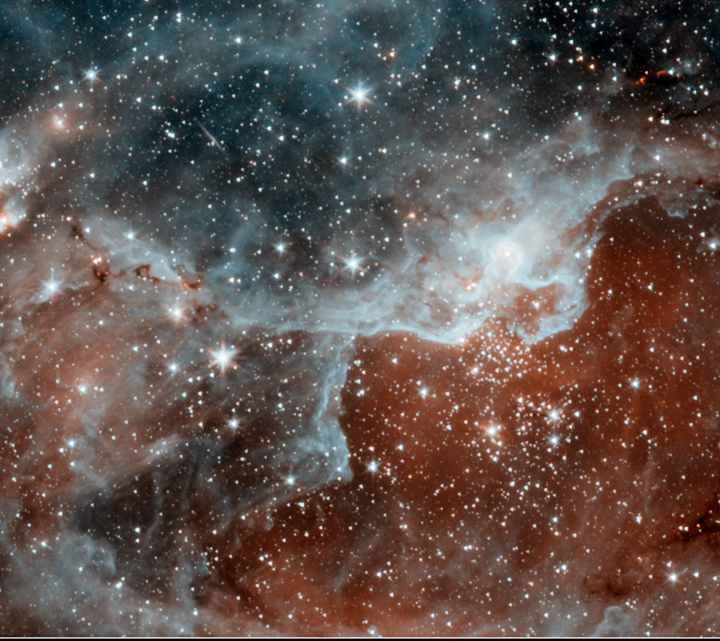
After blowing away its natal material, the young star cluster seen here emits winds and harsh ultraviolet light that sculpt the remnant cloud into fantastic shapes. Astronomers are not sure when that activity suppresses future star formation by disruption, and when it facilitates star formation through compression. The cluster, known as DR22, is in the constellation Cygnus the Swan. This image was taken during Spitzer's warm mission.
NASA / JPL-Caltech -

IRAC has systematically imaged the entire Milky Way disk, assembling a composite photograph containing billions of pixels with infrared emission from everything in this relatively narrow plane. The image here shows five end-to-end strips spanning the center of our galaxy. This image covers only one-third of the whole galactic plane.
NASA / JPL-Caltech / E. Churchwell (Univ. of Wisconsin) -
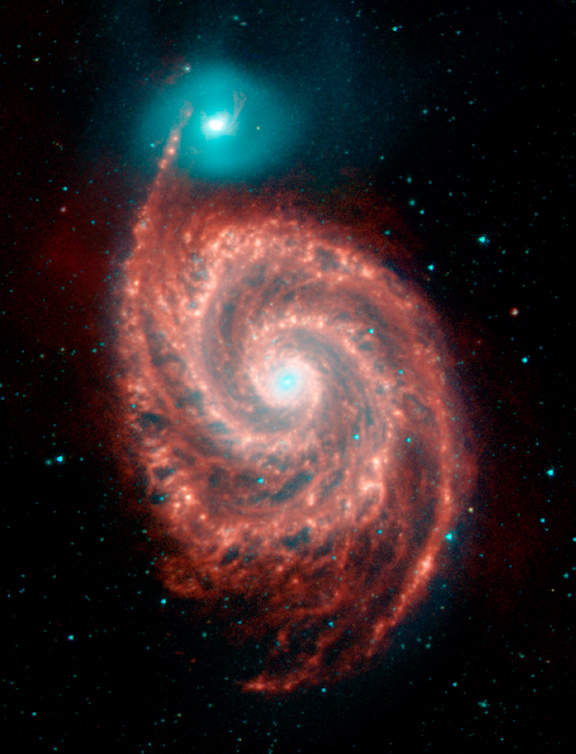
Collisions play an important role in galaxy evolution. These two galaxies - the Whirlpool and its companion - are relatively nearby at a distance of just 23 million light-years from Earth. IRAC sees the main galaxy as very red due to warm dust - a sign of active star formation that probably was triggered by the collision.
NASA / JPL-Caltech / R. Kennicutt (Univ. of Arizona) -
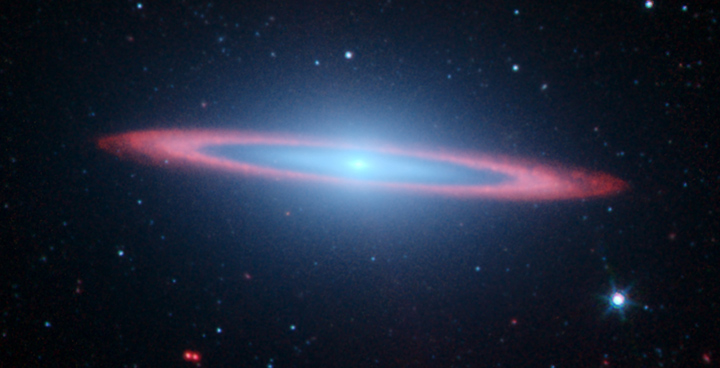
Star formation helps shape a galaxy's structure through shock waves, stellar winds, and ultraviolet radiation. In this image of the nearby Sombrero Galaxy, IRAC clearly sees a dramatic disk of warm dust (red) caused by star formation around the central bulge (blue). The Sombrero is located 28 million light-years away in the constellation Virgo.
NASA / JPL-Caltech / R. Kennicutt (Univ. of Arizona) -

The many points of light in this field aren't stars but entire galaxies. A few, like the mini-tadpole at upper right, are only hundreds of millions of light-years away so their shapes can be discerned. The most distant galaxies are too far away and appear as dots. Their light is seen as it was over ten billion years ago, when the universe was young.
NASA / JPL-Caltech / SWIRE Team